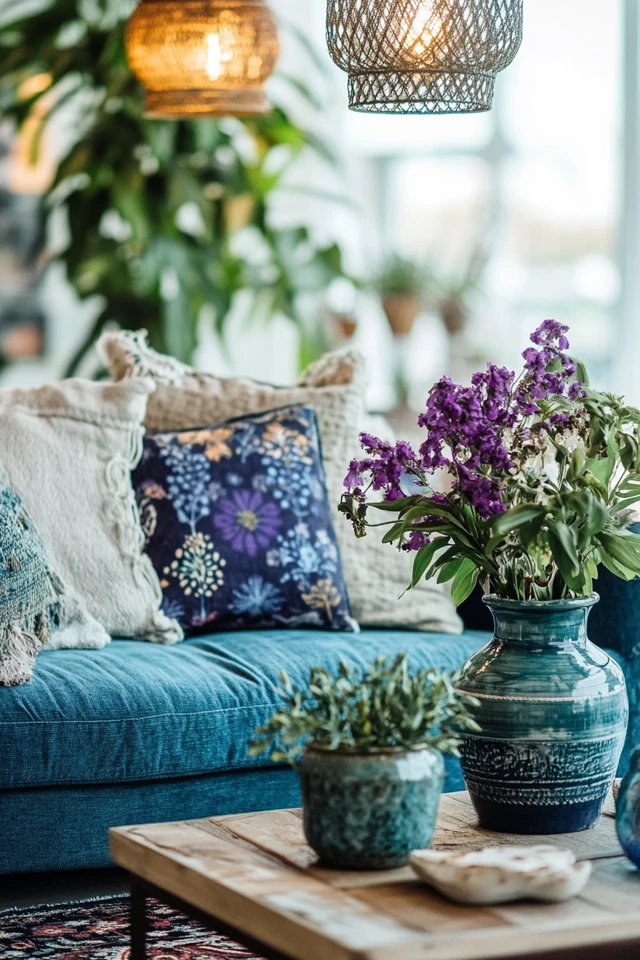Bohemian rooms are celebrated for their vibrant, free-spirited charm, but they can also feel overwhelming without a sense of balance. The secret to a stunning boho space isn’t just about adding layers of textures, patterns, and colors—it’s about knowing when to pull back and let certain elements shine. I remember designing my first bohemian-inspired room and realizing I’d gone a little too far with “more is more.” It looked chaotic rather than cozy. That’s when I learned the art of balance in boho design: blending boldness with restraint to create a room that feels grounded yet full of personality.
In this guide, I’ll share tips and ideas to help you create a balanced bohemian room design that’s stylish, cohesive, and uniquely you.
Why Balance Matters in Bohemian Design
1. It Prevents Overwhelm
A balanced boho room feels layered and eclectic without becoming visually chaotic.
2. It Highlights Key Pieces
When there’s balance, the eye can focus on standout elements like a bold rug or a statement chair.
3. It Creates Comfort
Balance ensures your room feels cohesive and calming rather than cluttered or disjointed.
1. Start with a Neutral Foundation
A neutral base helps ground your room and creates a backdrop for colorful boho accents.
- Wall Colors: Stick to whites, creams, or soft earthy tones like beige or light taupe.
- Flooring: Use neutral-toned rugs or natural materials like jute or sisal for a subtle foundation.
- Why It Works: A neutral base allows bold patterns and vibrant colors to pop without overwhelming the space.
2. Use a Cohesive Color Palette
Boho design often features a mix of colors, but a cohesive palette is essential for balance.
- Earthy Tones: Incorporate shades like terracotta, mustard yellow, sage green, and rust.
- Accent Colors: Add pops of jewel tones like emerald green or sapphire blue sparingly.
- Why It Works: A consistent color palette ties together different elements and keeps the room looking intentional.
Pro Tip: Limit your palette to 3-4 main colors to maintain harmony.
3. Layer Textures with Intention
Texture is a hallmark of bohemian design, but too much can feel heavy.
- Soft Textures: Incorporate textiles like linen, cotton, and velvet for a cozy feel.
- Natural Materials: Use rattan, wicker, wood, and leather for earthy warmth.
- Why It Works: Mixing textures adds depth and interest while creating a balanced, layered look.
Pro Tip: Pair smooth textures (like a leather ottoman) with softer ones (like a chunky knit throw) for contrast.
4. Mix Patterns Strategically
Bohemian spaces love bold patterns, but there’s a fine line between eclectic and chaotic.
- Start Small: Begin with 2-3 patterns in pillows, rugs, or curtains.
- Vary Scales: Combine large-scale patterns (like a Moroccan rug) with smaller ones (like a striped pillow).
- Why It Works: Mixing patterns thoughtfully creates visual interest without overwhelming the eye.
Pro Tip: Stick to patterns within your color palette for a cohesive look.
5. Balance Bold and Subtle Elements
To avoid visual overload, balance bold boho pieces with more subdued ones.
- Statement Pieces: Use one or two bold elements, like a patterned rug or a colorful tapestry.
- Subtle Accents: Pair bold pieces with simpler furniture or neutral-colored décor.
- Why It Works: The contrast allows each element to shine without competing for attention.
Pro Tip: Let one area, like your bed or a seating nook, be the focal point and keep surrounding areas more minimal.
6. Incorporate Greenery
Plants are a must-have in bohemian design, but they also bring balance and life to the space.
- Statement Plants: Add a fiddle leaf fig, monstera, or rubber tree for a bold touch.
- Trailing Plants: Use pothos or string of pearls to soften shelves or walls.
- Why It Works: Greenery provides a natural element that offsets the room’s layered textures and colors.
Pro Tip: Vary plant heights and sizes for a dynamic, layered look.
7. Embrace Negative Space
In boho design, it’s tempting to fill every corner, but leaving some areas open creates balance.
- Clear Surfaces: Leave some parts of your coffee table, dresser, or shelves empty to avoid clutter.
- Open Floors: Avoid overcrowding with too much furniture—let your rug or flooring shine.
- Why It Works: Negative space gives the eye a place to rest and makes the room feel more spacious.
8. Use Functional Décor
Combine beauty and practicality by choosing décor that serves a purpose.
- Woven Baskets: Use baskets for storage while adding texture.
- Mirrors: Reflect light and create the illusion of more space.
- Why It Works: Functional décor reduces the need for purely decorative items, keeping the room organized and intentional.
9. Create Zones for a Balanced Layout
Divide your room into functional zones to maintain balance and flow.
- Seating Area: Use a sofa or floor cushions to create a cozy lounging spot.
- Work or Reading Nook: Add a small desk or chair for a defined workspace.
- Why It Works: Zoning ensures the room feels purposeful and prevents overcrowding.
Pro Tip: Use rugs or furniture placement to visually define each zone.
10. Curate Décor Thoughtfully
Choose meaningful pieces and display them intentionally rather than overloading your space.
- Personal Touches: Showcase travel souvenirs, heirlooms, or handmade items.
- Rotating Displays: Change out decorative items seasonally to keep your room fresh and uncluttered.
- Why It Works: Thoughtful curation ensures your room feels personal and cohesive rather than cluttered.
Picture Gallery
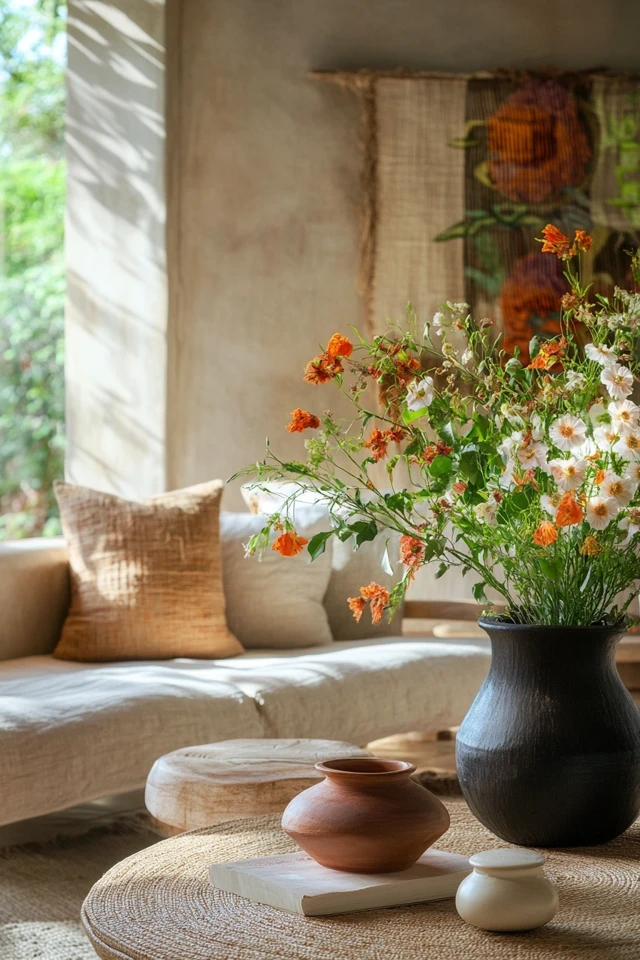
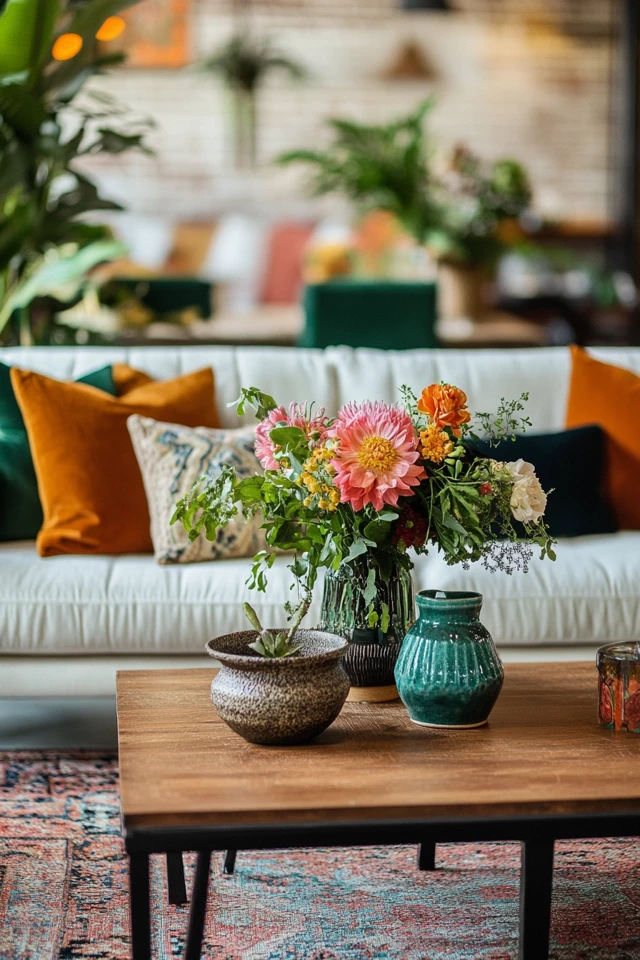
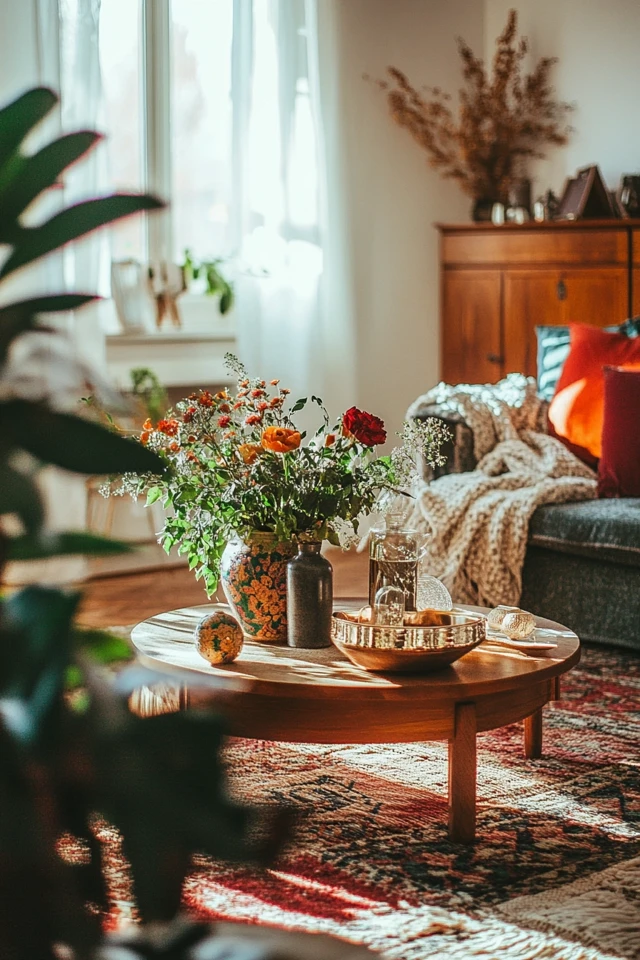
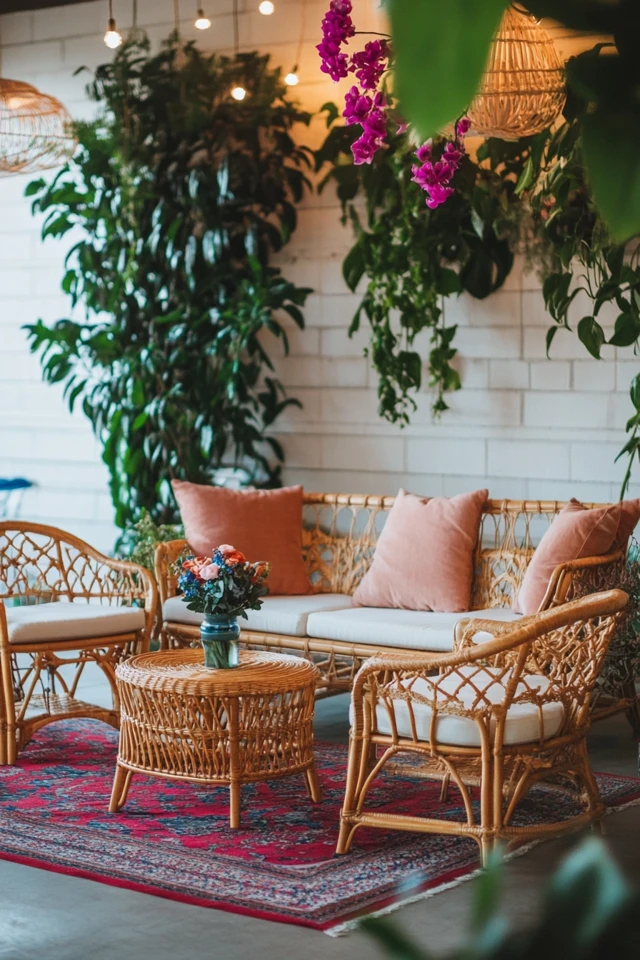
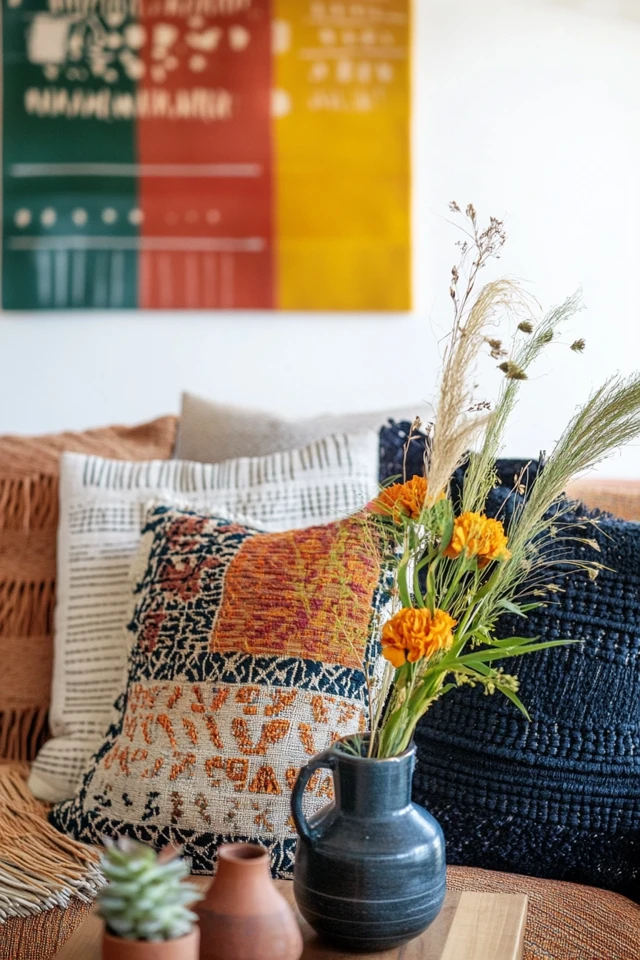
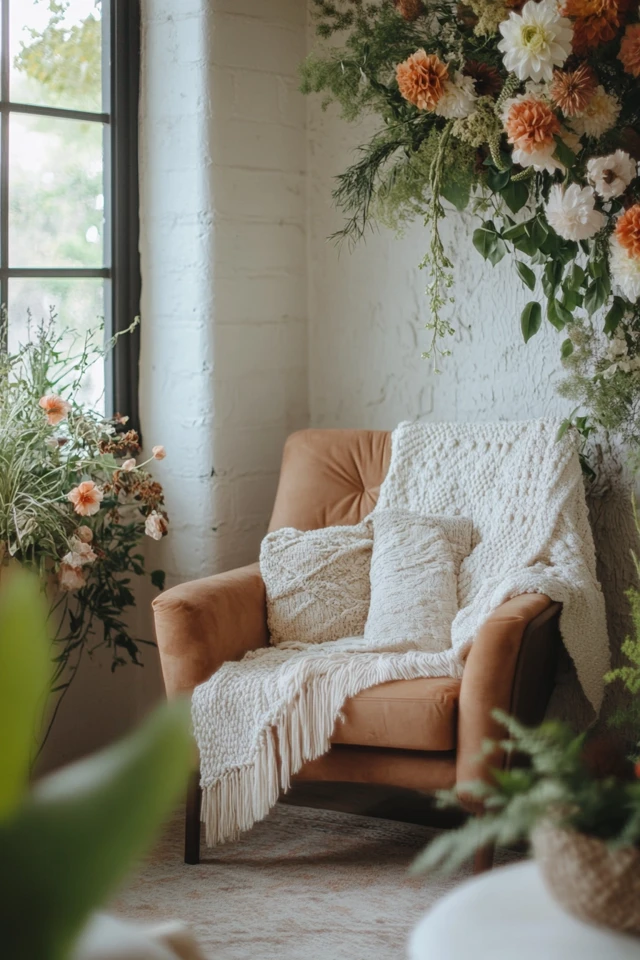
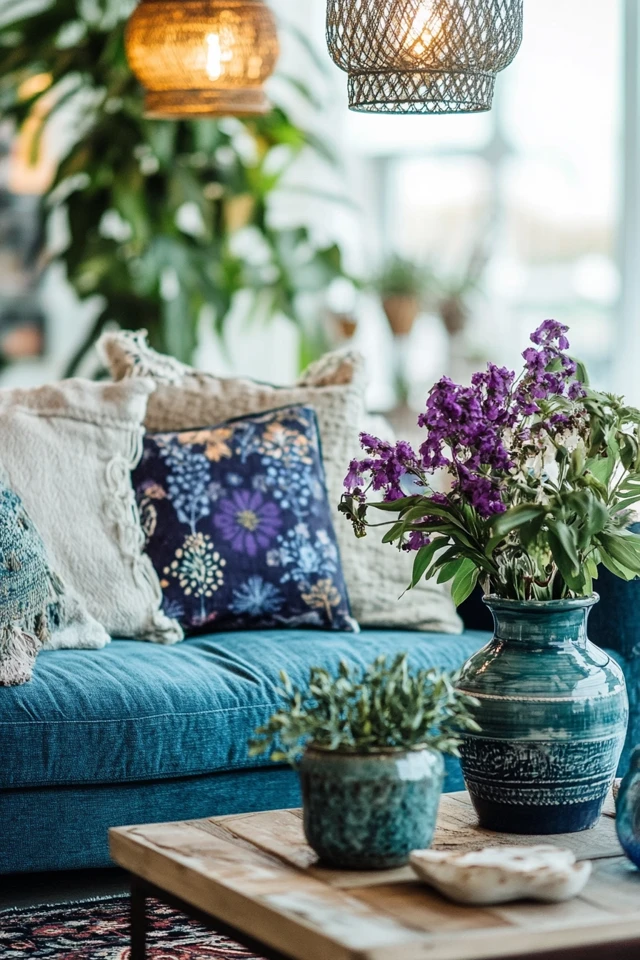
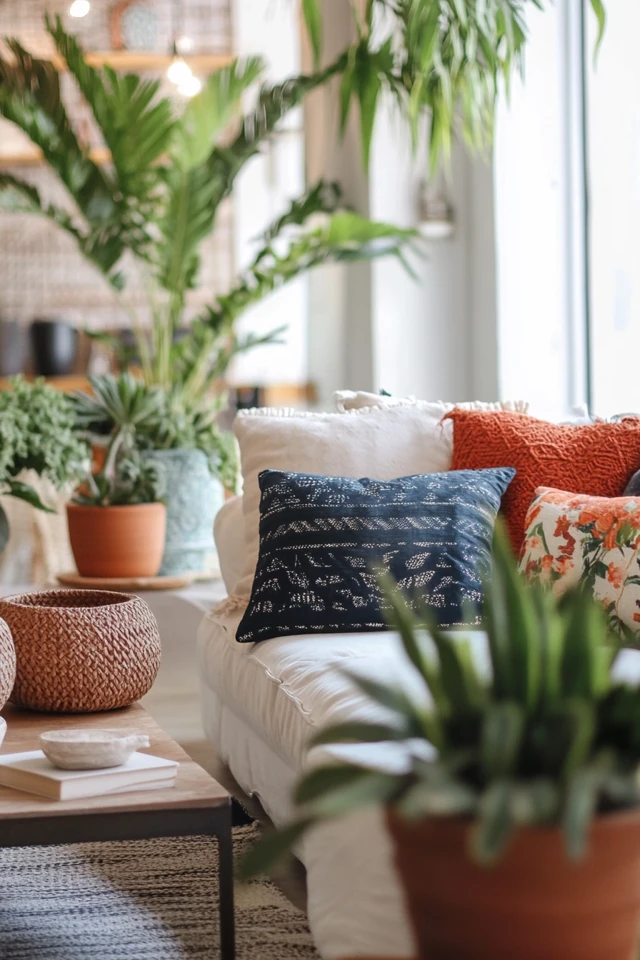
Tips for Maintaining Balance in a Bohemian Room
- Declutter Regularly: Remove items that no longer serve the space to keep it feeling open and fresh.
- Edit Your Layers: Evaluate your textiles and patterns to ensure they complement rather than compete.
- Focus on Flow: Arrange furniture and décor to create a natural, easy flow throughout the room.
Conclusion
A balanced bohemian room design is all about blending boldness with restraint, creating a space that feels both eclectic and harmonious. By starting with a neutral base, curating colors and patterns thoughtfully, and incorporating intentional layers, you can achieve a boho look that’s stylish, comfortable, and uniquely you.
Remember, bohemian design is about self-expression, so don’t be afraid to experiment and let your personality shine through. With a little attention to balance and flow, you’ll have a room that’s as cozy and inviting as it is visually stunning.
So, grab a woven throw, add a few plants, and let your boho design journey begin. Your perfectly balanced oasis awaits!
FAQs
1. How can I make my boho room feel less cluttered?
Use functional décor like woven baskets for storage, embrace negative space, and limit patterns to 2-3 per area.
2. What’s the best color palette for a balanced boho room?
Stick to earthy tones like beige, terracotta, and sage green, with a few pops of jewel tones like emerald or sapphire.
3. Can I mix modern and boho styles?
Absolutely! Pair sleek, minimalist furniture with boho textures and patterns for a balanced, contemporary look.
4. How do I layer rugs in a boho room?
Start with a neutral base rug, like jute or sisal, and layer a smaller, colorful patterned rug on top for dimension.
5. What’s the easiest way to add balance to a boho room?
Focus on one or two bold statement pieces, use negative space, and keep other elements neutral or understated.

